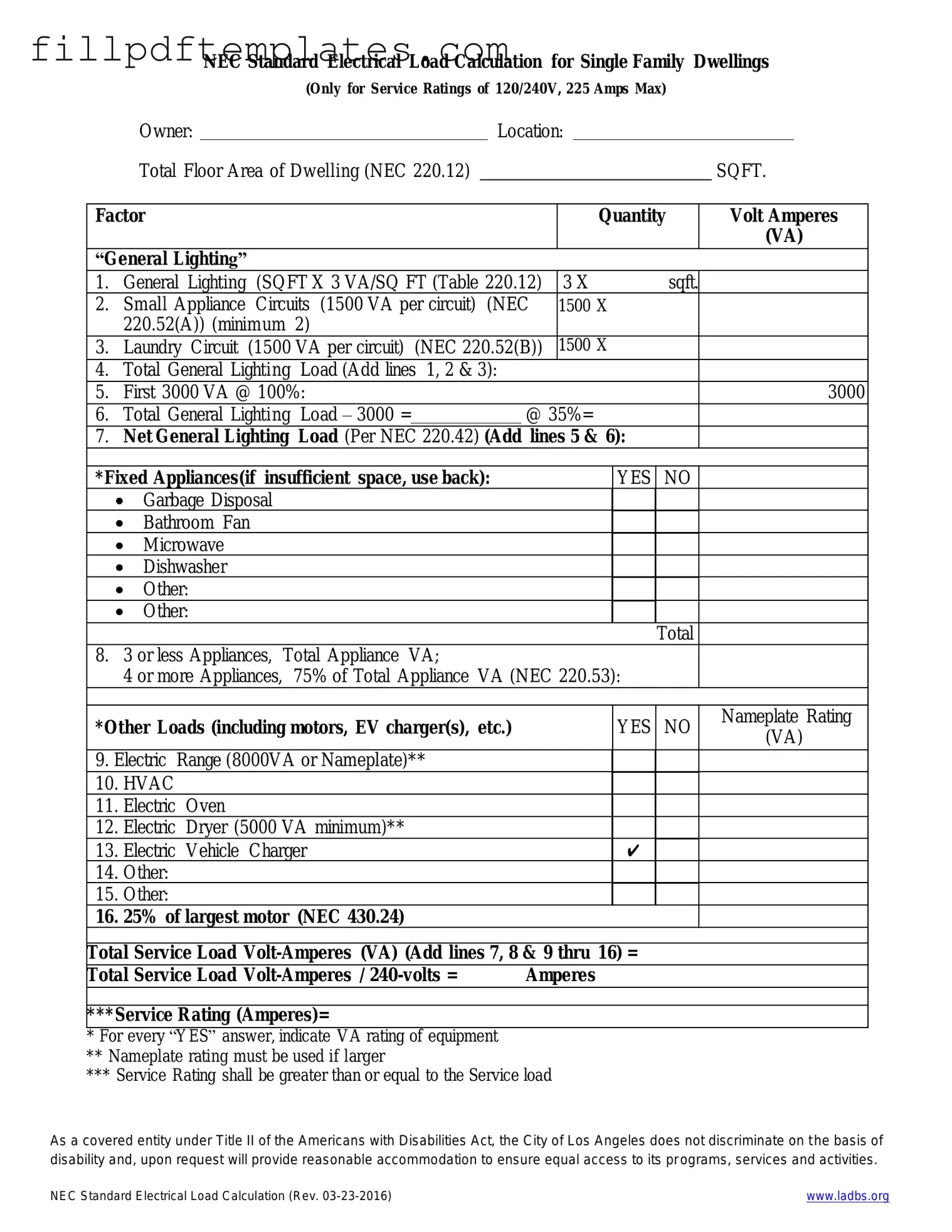Fill a Valid LADBS NEC Standard Electrical Load Calculation Template
The LADBS NEC Standard Electrical Load Calculation form is a critical document used to determine the electrical load requirements for various types of buildings and installations. This form ensures compliance with the National Electrical Code and helps in maintaining safety and efficiency in electrical systems. To facilitate your project, please consider filling out the form by clicking the button below.
Get Form

